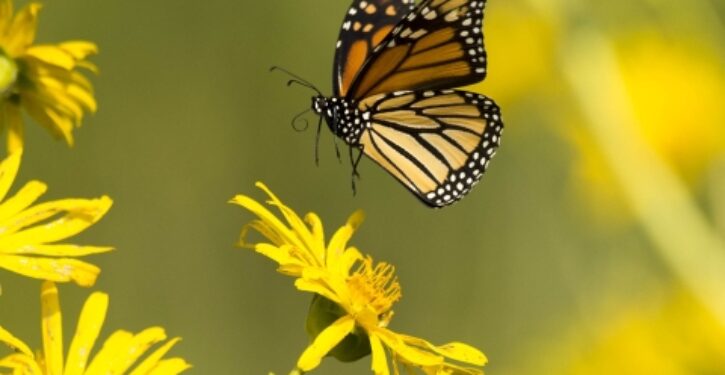
North America’s monarch butterfly is not “endangered,” according to a recent decision by the International Union for Conservation of Nature (IUCN).
The 27 September decision reversed a July 2022 designation of the butterflies as endangered. The earlier decision committed a “scientific injustice” by ignoring data showing monarchs are “doing really well,” says ecologist Andrew Davis of the University of Georgia.
Science reports that the
shift marks the latest twist in a scientific debate over the health of the showy black and orange insect. Monarchs are found worldwide, but the North American subspecies, called the migratory monarch (Danaus plexippus plexippus), has become “a poster child of species conservation because of its awesome ecology and migration,” says ecologist Anurag Agrawal of Cornell University, who was not involved in IUCN’s assessment or the challenge.
Migratory monarchs are split into two populations separated by the Rocky Mountains. Each fall, butterflies in the larger eastern population make an epic migration of up to 4000 kilometers from Canada and the northern United States to a forest in central Mexico, where they overwinter. Then, their descendants make a stepwise return to the north, taking up to four generations to complete the journey. The western population winters in Southern California along the Pacific coast and breeds along the Rockies.
Researchers generally agree that the number of monarchs wintering in Mexico declined beginning in the 1990s or earlier but stabilized around 2014 at about 55 million individuals. Many researchers blame the decline on two factors: logging in Mexico’s forests and farming in the U.S. and Canada that increasingly relied on crops modified to resist herbicides. That increased the use of herbicides that kill milkweed, which monarch caterpillars feed on.
A counterscenario, put forward by Davis and others, is that populations were anomalously high decades ago thanks to large-scale clearing of forests for agriculture in the 1800s. The resulting open landscapes allowed milkweed and monarchs to flourish until the land shifted back to forest or intensive farming. Davis also notes that overwintering populations have crashed in the past only to recover the following summer.
In other news, a baby beaver was born in London for the first time in 400 years. Last year, beavers were reintroduced to England’s capital city as part of a flood management project. “The semi-aquatic rodents were hunted to extinction in the 16th century during the Elizabethan era as they were predominantly killed for their fur and meat.”
Recently, carnivorous plants were reintroduced to English wetlands.
In other news, a mutant tomato could save harvests around the world.



